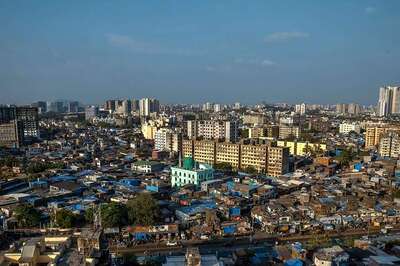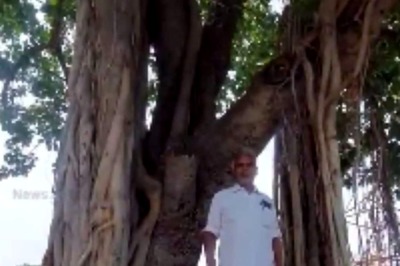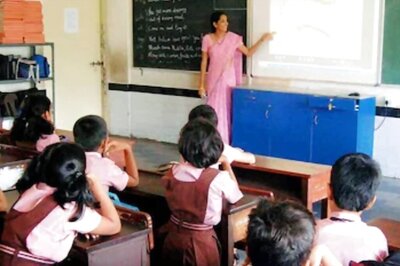
views
Guwahati: Rescuers are struggling against bad weather to retrieve the mortal remains of 13 air warriors from the AN-32 crash site in Siang, Arunachal Pradesh.
Helicopters like Mi17, Cheetah and Advanced Light Helicopter (ALH Dhruv) have been kept on a standby since the last three days, but they could not take off due to inclement weather in the valleys and cloud cover over the wreckage site.
“Retrieval operations require the steep mountain sides to be visible for the helicopters to safely hover close to the crash site, and for operating crew to be able to see the personnel on ground,” said IAF spokesperson Wing Commander Ratnakar Singh.
It has been 7 days since the wreckage of the missing AN-32 was identified 12,000ft from the last recorded aircraft position.
On June 11, local mountaineers, including two Everesters, had boarded a Mi-17 helicopter and helped locate the wreckage in the Pari Adi hills of Siang district. The next day, a team of 15 mountaineers was dropped near the crash site.
Three more mountaineers joined the rescue team later and the mortal remains of the air warriors along with the Flight Data Recorder (FDR) and Cockpit Voice Recorder (CVR) were recovered at the site on June 14.
Meanwhile, a 20-member team, comprising four Garud commandos of the Indian Air Force (IAF), four from the Special Forces of the Indian Army, 11 civilian porters and a local hunter well-acquainted with the terrain was formed on June 16.
The team is on its way to the crash site on foot. Sources said the trekking party is likely to reach the site late on June 19.
Besides piloting skills, there were many factors one needed to weigh in for winching operations near mountain slopes, said Group Captain Tarun Kumar Singha (Retd), adding the IAF pilots entrusted for the mission would manage to do the needful soon.
“While it is always tricky to negotiate weather in all seasons when flying over the mountainous regions of Arunachal Pradesh, monsoon is undeniably the worst. Add to it, the high altitude above mean sea level where the rescue helicopter has to hover ‘out of ground effect’ (OGE) to steer clear of obstructions and tall trees that abound there, takes away the luxury of the ‘air cushion’ that a helicopter normally derives when hovering close to ground,” said Singha.
“Every approach to the site may also become different from the previous one given the quirky weather conditions that prevail there,” he added.
According to IAF, the aircraft was on a routine maintenance and familiarisation sortie when it took off from the Jorhat air base in Assam at 12:27pm on June 3 for the Mechuka Advance Landing Ground (ALG) in Arunachal Pradesh.
The plane went off the radar around 1 pm. The wreckage was identified approximately 12-13km from Gate village, the last and northernmost village of Siang district and 16km from Lipo in neighbouring Shi Yomi district.
Siang Deputy Commissioner Rajeev Takuk said it had been raining continuously since the past few days, but despite all hurdles in the inhospitable terrain, the local administration and the local people were working tirelessly to help in search and retrieval operations.
“The weather God hasn’t been kind and it has been raining incessantly. It will take two days for mountaineers to reach the site from Shi Yomi district as the distance is shorter from here than Siang. The conditions remain the same — the area under Pari Hills is bereft of any road connectivity, and is filled with treacherous hills, ravines, rivers and gorges,” said Takuk.
Speaking to News18, Air Marshal Anjan Kumar Gogoi (retd) said the workhorse of the Indian Air Force, AN-32, had proved to be a versatile aircraft, but flying in high-altitude areas involved high risks.
The IAF supplies nearly 40,000 tonnes of material, including food and kerosene, every year to far-off places. Gogoi recollected how the AN-32 has been serving the IAF and the country since 1984.
“People believe that transport aircraft is only for carrying passengers, but that isn’t its only role — the AN-32 has done such a fantastic job for the Air Force and the country. Almost 15 years ago, it was used to transport Meat on Hoof (MOH), including sheep and lambs, to Ladakh, Siachen and Arunachal bases. It was used as an air ambulance during the Bhuj earthquake, to transport tigers from Sariska in 2010-2011, and carry currency to Manipur when insurgency was at its peak.”
Thirteen families of the deceased air warriors are waiting at the Jorhat air base since the last two weeks. A court of inquiry into the incident is underway.
“No efforts are being spared by IAF personnel to ensure that the mortal remains of their brothers-in-arms are retrieved at the earliest,” said IAF spokesperson, Wing Commander Ratnakar Singh.
Ten years ago, in June 2009, another AN-32 aircraft with 13 people on board went missing on its way to Jorhat from Mechuka. The wreckage of the aircraft was found 25km from the landing location, with no survivors in the tragedy.
According to sources, the Court of Inquiry had found pilot error, technically called Controlled Flight into Terrain (CFIT) attributable to human error, as the reason behind the crash in 2009.




















Comments
0 comment